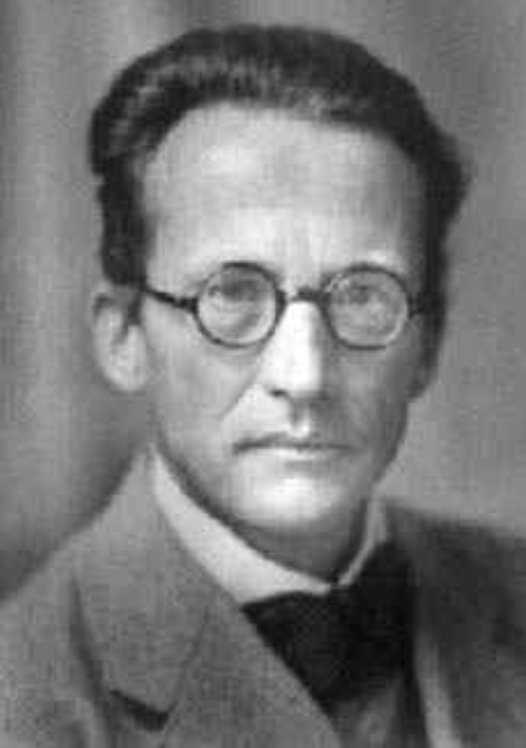
Erwin Rudolf Josef Alexander Schrödinger was born on August 12, 1887 in Vienna, Austria, and until age 10 was home schooled by a private tutor. Between 1898 and 1906, he attended the Akademisches Gymnasium where he demonstrated an early proclivity for the sciences. A fellow student later reported:
Especially in physics and mathematics, Schrödinger had a gift for understanding that allowed him, without any homework, immediately and directly to comprehend all the material during the class hours and to apply it. After the lecture … it was possible for [our professor] to call Schrödinger immediately to the blackboard and to set him problems, which he solved with playful facility.
Upon graduation, Erwin enrolled at the University of Vienna, where he studied analytical mechanics, applications of partial differential equations, eigenvalue problems, Maxwell’s equations and electromagnetic theory, optics, thermodynamics, and statistical mechanics, as well as a comprehensive program in advanced mathematics.
In 1910, Schrödinger received his doctorate for his dissertation titled, On the conduction of electricity on the surface of insulators in moist air. However, his first important paper emerged from his work with Boltzmann, but the outbreak of World War I, sent Schrödinger to the Italian front. In spite of the demands of military service, he was able to continue his theoretical research and earn a military citation for leadership during combat.
By 1921, Schrödinger had taken positions at several universities, finally accepting the chair of theoretical physics in Zürich. During this time, Erwin became interested in Louis de Broglie’s work in quantum physics and from this inspiration came the idea for a wave equation. Acknowledging that we can never know the exact position of an elementary particle at a precise time, the wave equation gives the probability that the particle will be in a particular location at any given time. This formulation of quantum mechanics became an alternative to Heisenberg’s formulation using matrix mechanics.
In 1935, Schrödinger published his famous essay in which he proposed what became known as the Schrödinger’s cat paradox. This was a thought experiment where a cat in a closed box either lived or died according to whether a radioactive particle was released. The idea was that the cat was neither alive nor dead until we observed it. In other words the cat existed in two states–alive and dead–simultaneously. Similarly, elementary particles were said to exist in “superposition” until observed.
Appalled by the Nazi persecution of the Jews, Schrödinger sought posts outside Germany. However, his flirtation with bigamy made him somewhat unacceptable at universities in the UK and America, so in 1939 Éamon De Valera arranged a job for him at the new Institute for Advanced Studies in Dublin, Ireland. While in Ireland, Erwin remained physically and mentally fertile, fathering two daughters with two different Irish women. It may have seemed to him that he was in a continuous state of “superposition.”
